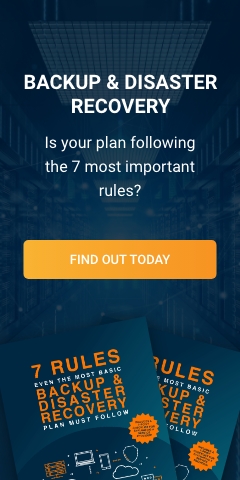According to a TechTarget survey, approximately 77 percent of surveyed companies have a disaster recovery (DR) plan. A disaster recovery plan outlines the steps an organization has to take to recover access to their software, data, and/or hardware to resume normal, critical business functions in the event of a natural or man-made disaster. Establishing a proper DR plan helps reduce the amount of disrupted productivity and ensuing downtime, but it’s only the first step towards ensuring your business’s long-term survival.
When it comes to disaster recovery, the most important question to ask yourself is, “Will my plan work?” Because business owners can never be too sure, the best way to ensure both efficacy and reliability is to conduct regular tests and have staff members run through the list of things they must do should a disaster occur. DR testing examines every single step of your disaster recovery plan, ensuring your organization’s ability to recover data, restore critical applications, and resume operations after a service disruption.
If your disaster recovery plan isn’t tested it might not work when you need it most. After completing a test, you should analyze audit logs to determine what worked and what didn’t. This information will let you know what changes need to be made and when you should re-test the new features. This is why it’s vital to conduct DR tests on a regular basis throughout the year and to incorporate them into maintenance and staff training.
Based on CloudVelox’s 2017 State of Disaster Recovery Survey, companies fall into two categories: those who undergo DR tests once a year or less, or those that seldom or never test their disaster recovery plan. These are the numbers recorded from 342 IT professionals across nine different verticals:
- Once per month: 16%
- Once per quarter: 26%
- Once per year: 25%
- Infrequently: 26%
- Never: 7%
Based on the results, more than half of the respondents tested their disaster recovery once a year or less, where 33% of respondents tested infrequently or not at all.
Without proper testing, the tiniest outage could result in major downtime, and a major disaster could prove lethal to your business. So be sure to test your DR plans, because you can never be sure how effective they’ll be if the unfortunate were to occur. These tests will help you identify and address any security or backup issues that could potentially shut you down for good.
As for the frequency, there isn’t one magic number, but there’s a good chance that you should be testing much more frequently than usual. The more tests you perform, the more you’re prepared. For a truly detailed disaster recovery plan, it’s best that you work with experienced IT professionals who can help determine specific procedures for your DR plan. This includes setting Recovery Time Objectives (RTOs) and Recovery Point Objectives (RPOs) for critical applications.
As an MSP, encouraging your clients to regularly conduct disaster recovery testing helps them avoid major data loss or business failure due to flawed DR plans. If you are still unsure or have unanswered questions, feel free to contact Complete Technology. We look forward to being your dedicated IT partner.


